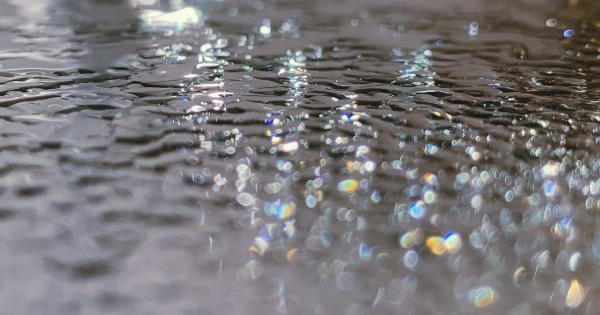There are many different ways that we can understand the state of our health and wellbeing. One of these ways is to look at the color of our urine.
Urine color can provide us with important information about our hydration levels, the functioning of our kidneys, and the presence of any underlying medical conditions. In this article, we will explore the meaning behind different urine colors and what they can tell us about our health.
Pale Yellow to Transparent Urine is Healthy
The ideal color for urine is a pale straw or transparent yellow. This indicates that you are well hydrated and your kidneys are functioning properly.
Pale yellow urine suggests that there is a healthy balance of water and waste products in your body, and your kidneys are effectively removing toxins and excess fluids. If your urine is transparent, it means you are drinking more water than your body actually needs, and this is a great way to keep your body hydrated.
Dark Yellow to Amber-colored Urine
If your urine is dark yellow or amber in color, it usually means that you are dehydrated. Dark yellow urine indicates that you are not drinking enough water and your body is working hard to conserve fluids.
Dehydration can also be caused by sweating, diarrhea, vomiting, or excessive exercise, so if you have been engaging in any of these activities, it is important to drink more fluids to replace the water lost. Dark urine can also indicate that your kidneys are not functioning optimally and may be struggling to remove toxins and waste products from your body.
If you notice that your urine is dark yellow or amber in color consistently, it is important to increase your fluid intake and speak to a healthcare provider about getting your kidneys checked.
Orange-colored Urine
Orange-colored urine can be a cause for concern as it may indicate underlying health conditions such as liver disease, dehydration, or obstruction in the bile duct.
However, it is important to note that certain foods and medications can cause a temporary orange discoloration of urine. For example, if you have consumed beets, rhubarb, or carrots, you may notice that your urine is temporarily orange in color. Similarly, some medications such as rifampin, phenazopyridine, and warfarin may also cause orange-colored urine.
If you notice that your urine is consistently orange in color, it is best to speak with a healthcare provider to rule out any serious underlying conditions.
Brown-colored Urine
If your urine is brown in color, it is usually a sign of a serious underlying medical condition. Brown urine can indicate liver disease, kidney disease, muscle breakdown, or severe dehydration.
In some rare cases, brown urine can also be caused by a genetic condition called porphyria. If you notice that your urine is consistently brown in color, it is important to seek medical attention right away.
Red or Pink-colored Urine
If your urine is red or pink in color, it may indicate the presence of blood. Blood in urine can be caused by a variety of underlying conditions such as kidney stones, urinary tract infections, bladder cancer, or prostate problems.
However, it is important to note that certain foods such as beets, blackberries, and rhubarb can also cause urine to turn red or pink in color. Additionally, certain medications such as blood thinners can also cause blood in urine. If you notice blood in your urine, it is important to seek medical attention right away to rule out any serious underlying conditions.
Green or Blue-colored Urine
Green or blue-colored urine is rare but can be caused by a number of factors such as medications, food, or medical conditions. Antibiotics such as ciprofloxacin or UTI medications such as phenazopyridine can turn urine green or blue.
Certain foods such as asparagus, spinach, and green food coloring can also cause urine to turn green. In some rare cases, medical conditions such as porphyria or an infection in the urinary tract can cause green-colored urine.
Generally, green or blue-colored urine is not a cause for concern and will go away on its own once the medication or food is metabolized.
Cloudy or Foamy Urine
If your urine is cloudy or foamy, it may be a sign of an underlying medical condition such as a urinary tract infection or kidney stones. Cloudy or foamy urine can also be caused by dehydration, medications, or excessive protein in the urine.
If you notice that your urine is consistently cloudy or foamy, it is important to speak to a healthcare provider to get a proper diagnosis.
When to Seek Medical Attention
While some urine color changes are harmless and temporary, others can be a cause for concern and may require medical attention.
If you are experiencing any of the following symptoms in conjunction with urine color changes, you may need to seek medical attention immediately:.
- Difficulty urinating
- Pain or burning while urinating
- Fever
- Nausea or vomiting
- Blood in urine
- Excessive thirst
- Abdominal or back pain
- Frequent urination
- Fatigue or weakness
Conclusion
In conclusion, urine color can provide us with important information about our hydration levels, kidney function, and overall health.
It is important to pay attention to any changes in urine color and seek medical attention if there are any accompanying symptoms. Maintaining a healthy and balanced diet, staying hydrated, and seeking prompt medical attention can help ensure that your kidneys are functioning optimally and that any underlying medical condition is detected early.































